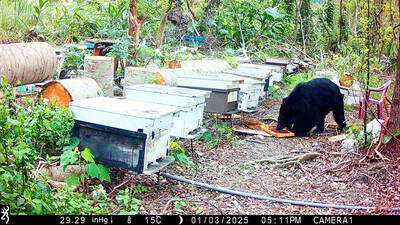Taiwan ranked ninth among 12 Asian countries rated in an English skills index published in Chinese yesterday, outperforming only Vietnam, China and Thailand.
The result was reported by international education company Education First, which rated 1.7 million adults from 54 countries worldwide from 2009 to last year based on tests covering English listening and reading proficiency.
Taiwan ranked ninth in Asia and 30th in the world, and its global ranking was within the 26th-to-38th range that represents low proficiency, the company’s English Proficiency Index showed.
Singapore, Malaysia, India and Pakistan — countries where English is an official language — led Asian countries in the rankings, followed by South Korea, Japan, Hong Kong and Indonesia.
Globally, European countries, led by Sweden, Denmark, the Netherlands, Finland and Norway, topped the list.
Commenting on Singapore and Malaysia’s English skills, Education First senior vice president Christopher McCormick said the two nations have higher levels of proficiency because of their multi-ethnic populations who rely on English to communicate.
Although South Korea (21st) and Japan (22nd) put a high priority on education, the lack of an English-speaking environment, the focus on memorization and passive interaction between teachers and students led to proficiency levels falling below the Organisation for Economic Co-operation and Development average, he said.
McCormick suggested that Taiwan improve the public’s English ability in general to boost its competitiveness internationally.
The report also highlighted the discrepancy in English proficiency among different industries. Employees in the tourism, consultancy and telecommunications sectors topped the list, while civil servants came in last.
However, Education First added that the test was voluntary and many people who are highly proficient in English were not likely to have taken it.
The company said the index does not necessarily represent the actual situation, but could serve as a reference for governments when drawing up education strategies.
The English version of the index was published late last month. Education First’s Taiwan branch released the Chinese-language version yesterday at an event attended by local high-school English teachers to discuss the nation’s English language education.

HORROR STORIES: One victim recounted not realizing they had been stabbed and seeing people bleeding, while another recalled breaking down in tears after fleeing A man on Friday died after he tried to fight the knife-wielding suspect who went on a stabbing spree near two of Taipei’s busiest metro stations, Taipei Mayor Chiang Wan-an (蔣萬安) said. The 57-year-old man, identified by his family name, Yu (余), encountered the suspect at Exit M7 of Taipei Main Station and immediately tried to stop him, but was fatally wounded and later died, Chiang said, calling the incident “heartbreaking.” Yu’s family would receive at least NT$5 million (US$158,584) in compensation through the Taipei Rapid Transit Corp’s (TRTC) insurance coverage, he said after convening an emergency security response meeting yesterday morning. National

Taiwan has overtaken South Korea this year in per capita income for the first time in 23 years, IMF data showed. Per capita income is a nation’s GDP divided by the total population, used to compare average wealth levels across countries. Taiwan also beat Japan this year on per capita income, after surpassing it for the first time last year, US magazine Newsweek reported yesterday. Across Asia, Taiwan ranked fourth for per capita income at US$37,827 this year due to sustained economic growth, the report said. In the top three spots were Singapore, Macau and Hong Kong, it said. South

PLANNED: The suspect visited the crime scene before the killings, seeking information on how to access the roof, and had extensively researched a 2014 stabbing incident The suspect in a stabbing attack that killed three people and injured 11 in Taipei on Friday had planned the assault and set fires at other locations earlier in the day, law enforcement officials said yesterday. National Police Agency (NPA) Director-General Chang Jung-hsin (張榮興) said the suspect, a 27-year-old man named Chang Wen (張文), began the attacks at 3:40pm, first setting off smoke bombs on a road, damaging cars and motorbikes. Earlier, Chang Wen set fire to a rental room where he was staying on Gongyuan Road in Zhongzheng District (中正), Chang Jung-hsin said. The suspect later threw smoke grenades near two exits

The Forestry and Nature Conservation Agency yesterday launched a gift box to market honey “certified by a Formosan black bear” in appreciation of a beekeeper’s amicable interaction with a honey-thieving bear. Beekeeper Chih Ming-chen (池明鎮) in January inspected his bee farm in Hualien County’s Jhuosi Township (卓溪) and found that more than 20 beehives had been destroyed and many hives were eaten, with bear droppings and paw prints near the destroyed hives, the agency said. Chih returned to the farm to move the remaining beehives away that evening when he encountered a Formosan black bear only 20m away, the agency said. The bear